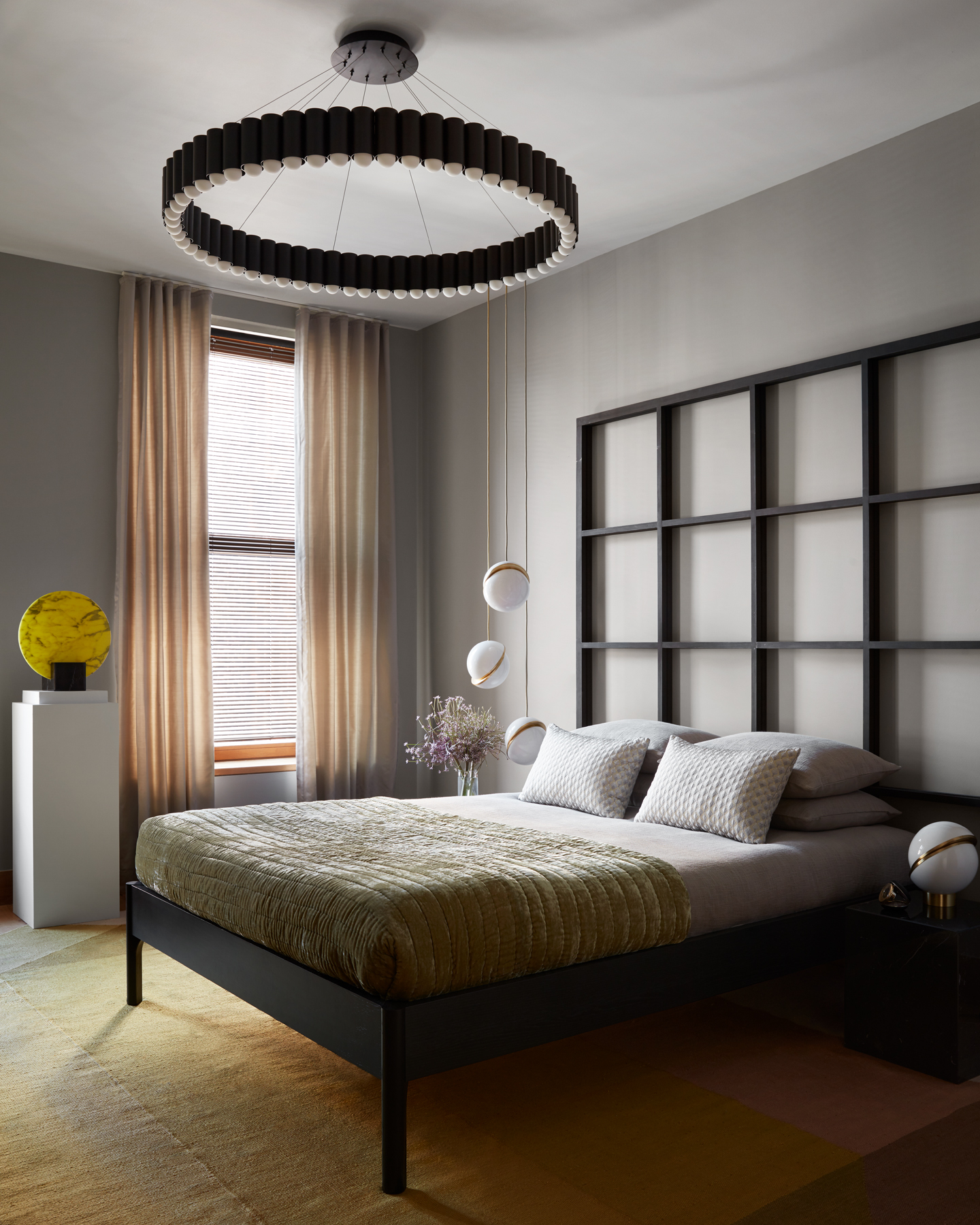Does bedside lighting need to match on both sides? Designers on whether twinning is winning
Interior designers debate on whether bedside lighting always needs to match

As part of my recent home renovation project, I'd planned to have lighting wired into my bedroom on either side of the bed. The idea was to have matching pendants hanging down on both the left and the right.
But when the electrician needed to know where to place his light outlets I was in the middle of stressing about something else renovation-related. I couldn't really think about the question too hard, so he just placed them in the center of the ceiling and was done with it.
And so began my extensive collection of bedside lights that have been acquired over time. None of them match. And because I always like to seek assurances from the professionals, I've checked in with a few of my favorite interior designers to see what they thought about this. Does it matter? Should they match? Or should they in fact not match at all?
Happily, they all unanimously agreed on where the trend for modern bedroom lighting was going, setting out a blueprint for all future renovations and lighting projects going forward.
Does bedside lighting need to match?

The short answer is no. Bedside lamps do not need to match each other, according to interior designers.
They had several reasons as to why. 'Once an area catered only for table lamps, now bedside lighting gives us the opportunity to be creative,' says the designer Lee Broom, based in New York and London. He designed the space above, which has one of his Crescent table lamps on one side and three of his corresponding Crescent pendant lights on the other.
'I don’t believe each side should totally match, however, there should be a correlation between them. We have previously installed a low-hung pendant fixture on one side, which always looks dramatic, and then a table lamp version of the same fixture on the other side. It breaks up the monotony but still keeps an element of uniformity.'
Design expertise in your inbox – from inspiring decorating ideas and beautiful celebrity homes to practical gardening advice and shopping round-ups.
Interior designer Layton Johnson of JLayton Interiors agrees that identical lamps on either side aren't important, but what is key is that they have a relationship with each other. 'The scale should always be the same,' Layton says. 'You shouldn't have one big and one small.'

The interior designer Eva Sonaike had a very strong reaction as to whether bedside lighting should match.
'You're not sleeping in bed with your twin!' Eva says. 'Why would they match? Both partners will want different things. One might like to read, another might go straight to sleep. Sometimes a really beautiful light doesn't give you the illumination you need. I actually have a clip on reading lamp that I bought really affordably from Amazon which I've attached to my side of the headboard – my husband doesn't have one. It's not the prettiest but I really like to be able to see my book before I go to sleep, and I can take it off and hide it in a drawer when I want the bedroom to be really aesthetic.'
Eva recently worked on a project where the lights didn't match, but they spoke to each other. 'They both had the same marble bases, but the shades were in different colors,' she says. 'The overall effect was very modern.'

The interior designer Lonika Chande agreed with the principle of non-matching bedside lighting, but she had a caveat to take into consideration.
'The wall lights should match, even though the bedside lights don’t need to,' Lonika says. 'Matching wall lights are more pleasing on the eye, but it can be playful to be a bit more carefree with the lamps. I've just finished a very soft bedroom that was filled with a lot of antiques, and the lights are the same material but they're not exactly the same. One is painted, and will be a bit taller, but they're both similar shapes, and that's what brings in the overall effect of harmony.'
Gabriela Einsenhart of the Atlanta-based design agency Studio Silo takes a similar approach. 'I like to play with symmetry in a bedroom,' she says. 'You want to walk into a space and for your eye to make circle.' But that doesn't have to always be the lights. 'This can come from having matching nightstands,' she adds.
So designers seem to unanimously agree with me that bedside lighting doesn't need to match. There was a very clear bedroom look a few years back that was very luxury hotel vibes – symmetry everywhere, especially when it came to side tables and bedside lighting.
However, characterful, lived-in spaces have been far more 'on trend' in recent years and being more playful with design decisions. The key when mismatching your lighting, in any room really not just in the bedroom, is to have a similarity between the two, something that makes the choice to have different lighting feel purposeful.
Pip Rich is an interiors journalist and editor with 20 years' experience, having written for all of the UK's biggest titles. Most recently, he was the Global Editor in Chief of our sister brand, Livingetc, where he now continues in a consulting role as Executive Editor. Before that, he was acting editor of Homes & Gardens, and has held staff positions at Sunday Times Style, ELLE Decoration, Red and Grazia. He has written three books – his most recent, A New Leaf, looked at the homes of architects who had decorated with house plants. Over his career, he has interviewed pretty much every interior designer working today, soaking up their knowledge and wisdom so as to become an expert himself.

